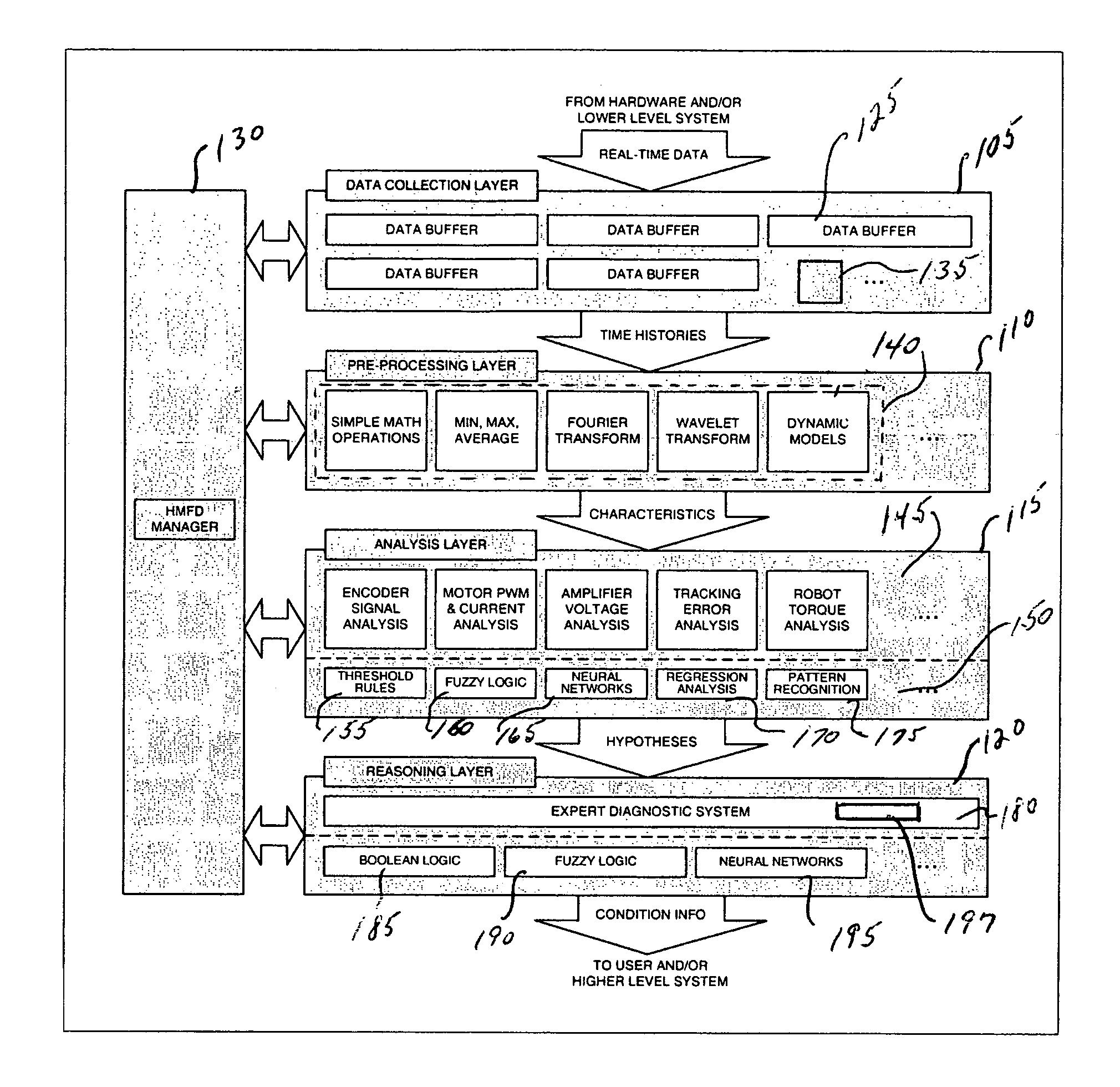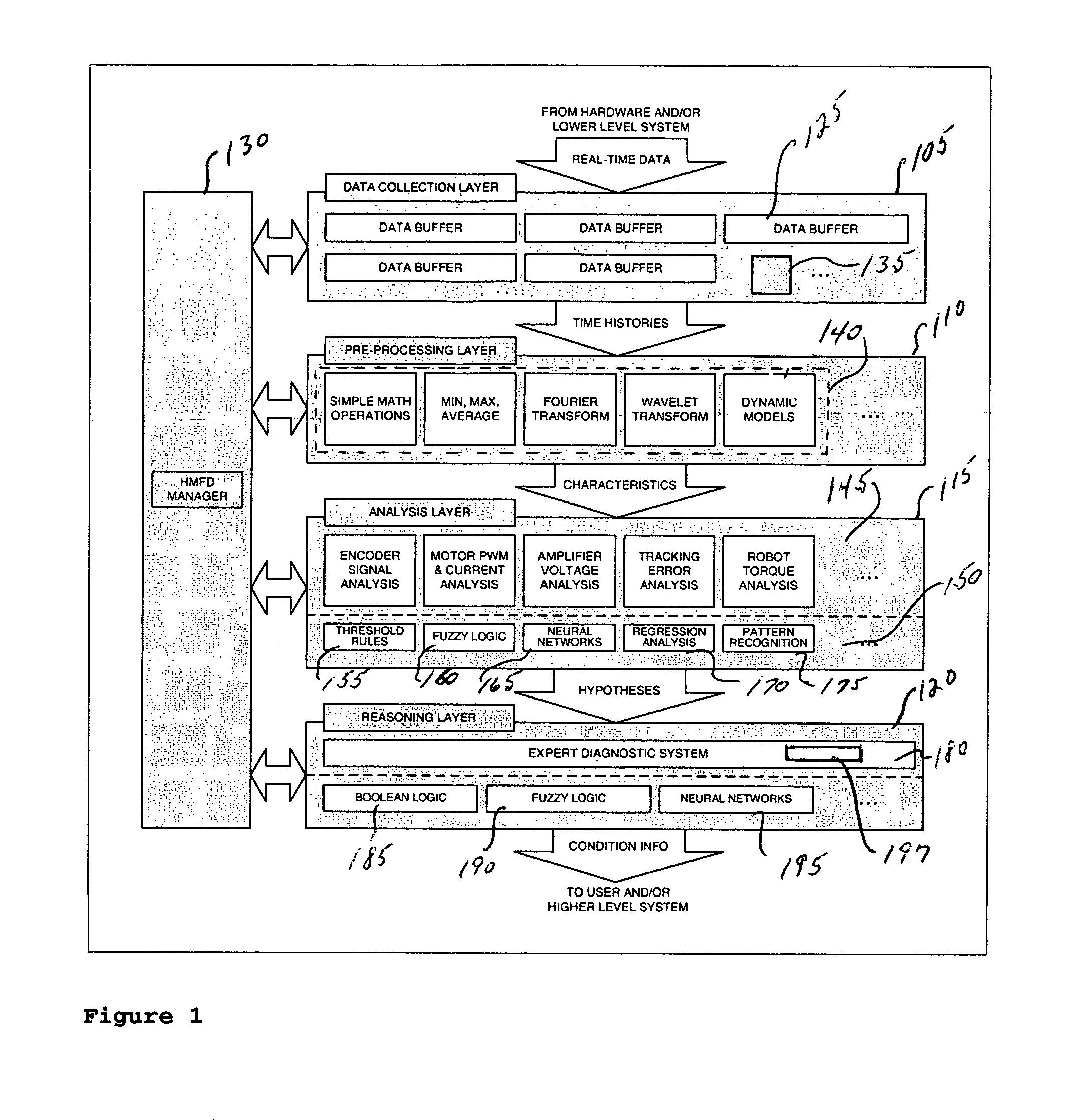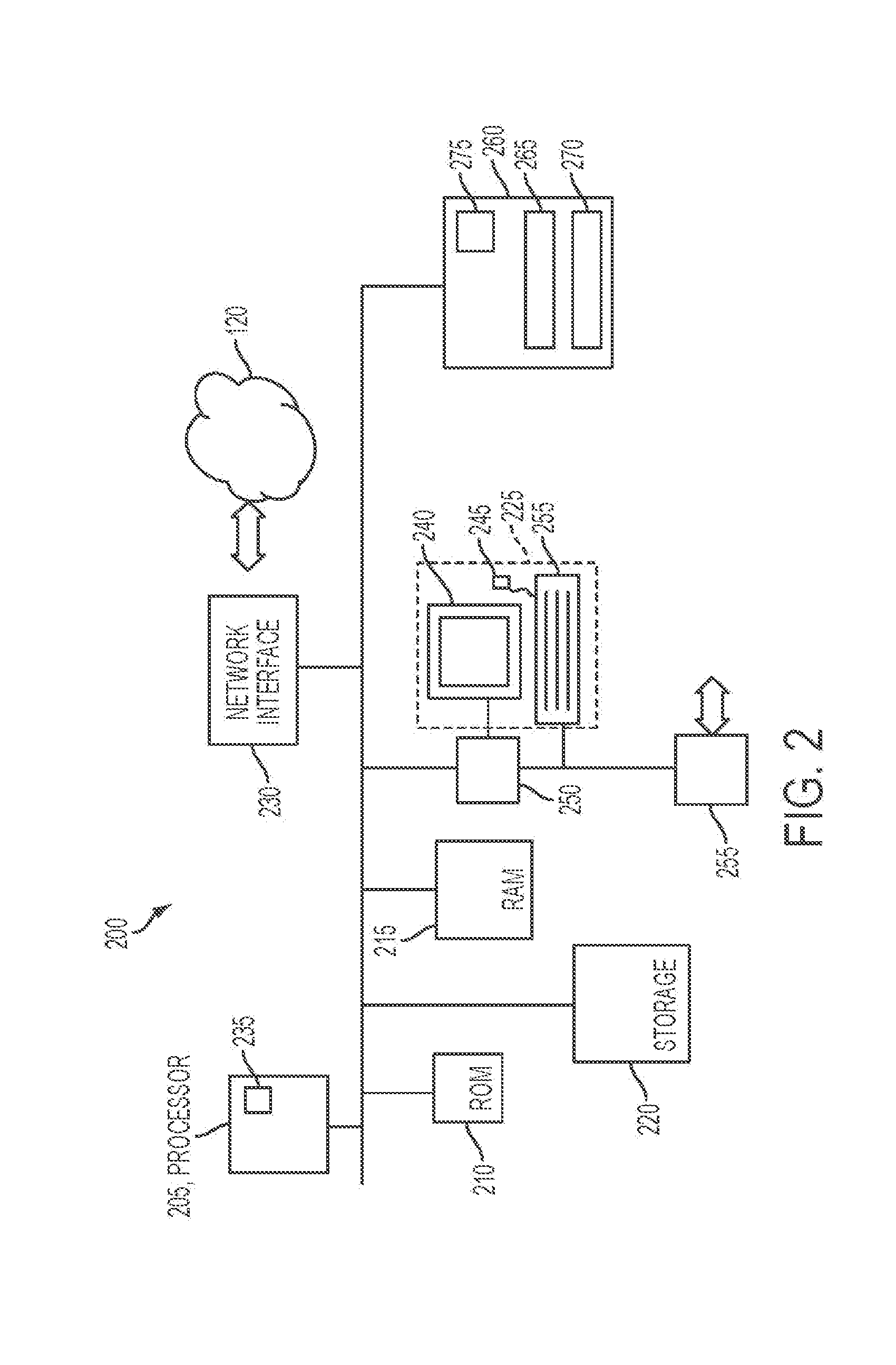Intelligent condition-monitoring and fault diagnostic system for predictive maintenance
a condition monitoring and fault diagnosis technology, applied in the direction of testing/monitoring control systems, semiconductor/solid-state device testing/measurement, instruments, etc., can solve the problems of inability to isolate faults, discrepancies in measurement results, and significant cost burden on the end-user of manufacturing tools
- Summary
- Abstract
- Description
- Claims
- Application Information
AI Technical Summary
Benefits of technology
Problems solved by technology
Method used
Image
Examples
example modes
OF FAILURE
[0138]Component failures can be categorized broadly into two different types—“chronic” faults that develop gradually and “acute” faults that occur instantly. Faults of the first kind can be detected by a condition monitoring system at their early stages of development. Early detection and repair will help avoid unexpected failure during operation. On the other hand, faults of the second type do not lend themselves to early detection. However, a fault diagnostics system can help diagnose them when they occur and therefore shorten the time to bring the machinery back into operation. The different types of faults that can occur are listed below and summarized in Table 3.
[0139]
TABLE 3Example modes of failure and their symptomsMode ofSudden / ComponentfailuregradualMeasurable symptomMotorWeakeningGradualOverall increase in motororwinding currents;disintegrationOverall increase in motoroftemperature;magnetsIncrease in powerconsumption;Increase in energydissipation;Longer duration ...
PUM
 Login to View More
Login to View More Abstract
Description
Claims
Application Information
 Login to View More
Login to View More - R&D
- Intellectual Property
- Life Sciences
- Materials
- Tech Scout
- Unparalleled Data Quality
- Higher Quality Content
- 60% Fewer Hallucinations
Browse by: Latest US Patents, China's latest patents, Technical Efficacy Thesaurus, Application Domain, Technology Topic, Popular Technical Reports.
© 2025 PatSnap. All rights reserved.Legal|Privacy policy|Modern Slavery Act Transparency Statement|Sitemap|About US| Contact US: help@patsnap.com



